Contents
Innovation and optimisation
in cement grinding

Electrical energy demand for cement production
• Extraction and blending 5 %
• Raw material grinding 24 %
• Raw material homogenisation 6 %
• Clinker production 22 %
• Cement grinding 38 %
• Conveying, packing, loading 5 %
100 %
total demand ~ 110 kWh/tcement
more than 60 % for grinding processes! *all*
Grinding and its impact on quality
Cement grinding as an example:
quality parameters:
• workability
• water demand
• strength
• durability of concrete

Particle size distribution in RRSB-diagram
Description of cement fineness with RRSB position parameter
and slope:
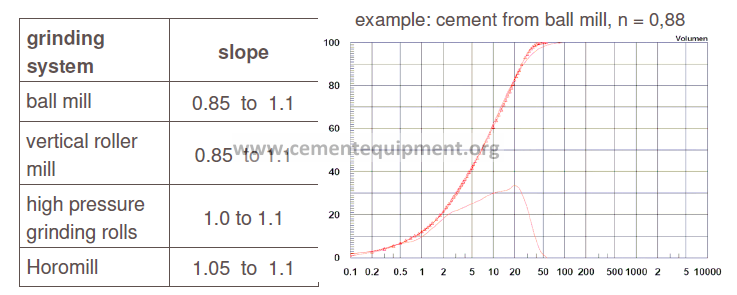
Specific energy consumption of different grinding systems

Evolution of comminution technologies Chronology:
Manual comminution
Hammer mechanism (ca. 1512)
Edge runner (ca. 1800)
Ball mill (ca. 1890)
Vertical roller mill (ca. 1930)
High pressure grinding rolls (ca. 1985)
Horomill®
Manual comminution (16th century)
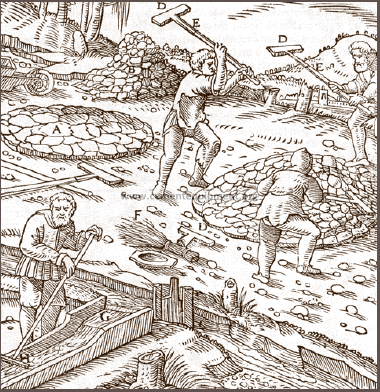
Hammer mechanism (16/17th century)
from:
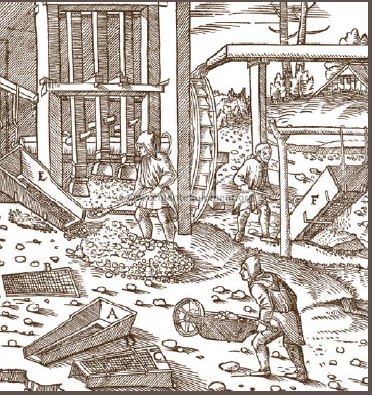
Edge runner (18/19th century)

Evolution of comminution technologies
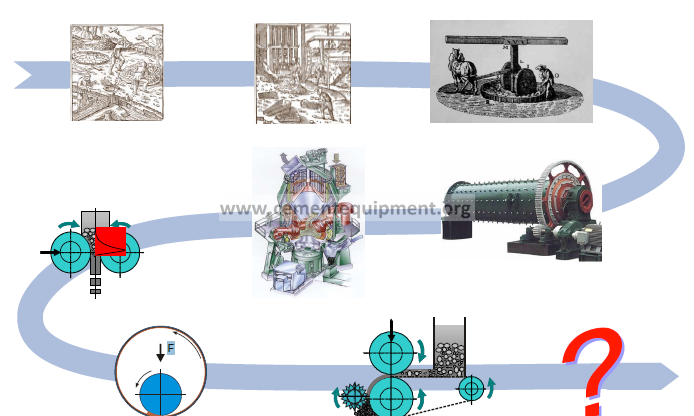
Comminution mechanisms in different
grinding systems

Comminution mechanisms in the ball mill
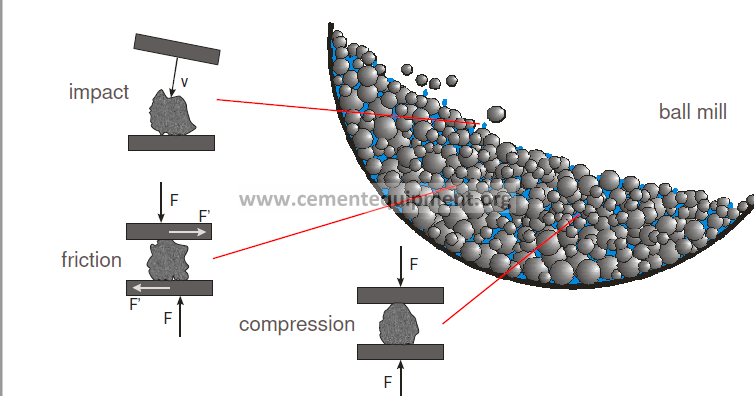
Ball mill for dry grinding
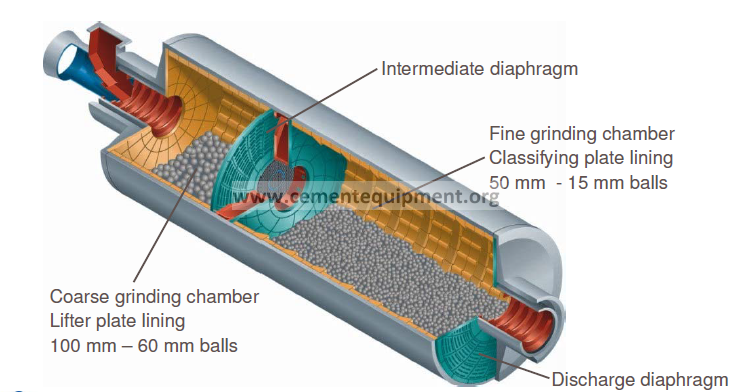
Ball mill
Advantages
• combined drying and grinding
• reliable – long service life
• widePSD
• high fineness
• good for abrasive materials
Disadvantages
• for high moisture
external drying
necessary
• high energy demand
• no explicit stress area
still widely used in cement plants
Potentials for ball mills
Exact adjustment of grinding media and linings to requirement
separator adjustment
–> optimisation of mill and separator
Grinding systems for efficient comminution
Objectives
• Lower grinding energy demand than ball mills
• Comminution to a large extent by using the
compression
• Comminution in an explicit “compression zone”
Principle design of vertical roller mills
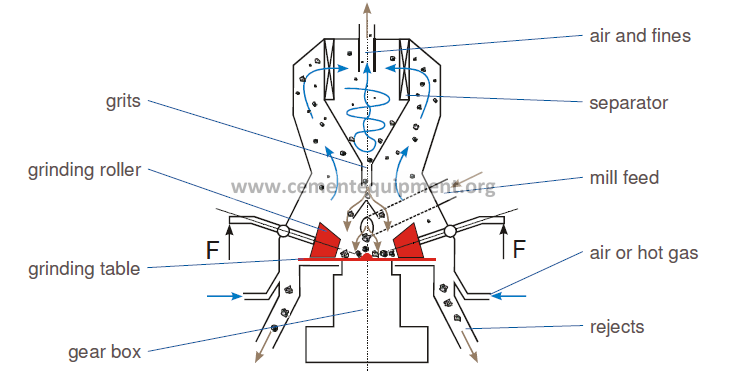
Vertical roller mills for raw material grinding
• Combined drying, grinding and separation
• Energy consumption 60 – 70 % compared
to a ball mill
• Moisture contents up to 25 %
• Compared to a ball mill 10 to 20 % higher
capital costs
• Used in 90 % of all new plants as raw mill
• Throughput up to 840 t/h, feed size up
to 200 mm
• Installed power up to 7 000 kW, grinding
table diameter up to 6 700 mm
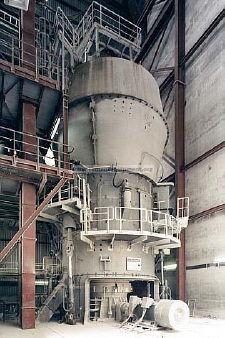
Vertical roller mill for cement and slag grinding
• Energy consumption:
70 % of a ball mill for cement
50 % of a ball mill for slag
• Fineness:
max. 4 500 cm²/g for cement
max. 6 000 cm²/g for slag
• Moisture required for stabilising the
grinding bed – less influence on
cement quality
• Lowwearcosts
• Throughput up to 300 t/h
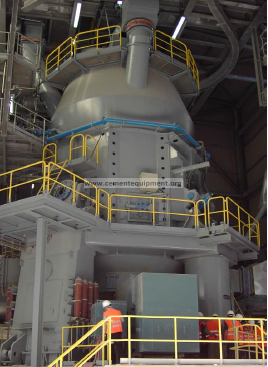
High pressure grinding rolls
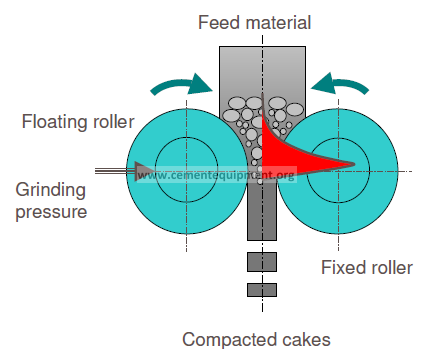
• Defined grinding area
• Feed up to 60 mm
• Grinding pressure from
50 to 400 MPa
• Compacted cakes up
to 40% fines and
coarse particles
High pressure grinding rolls – main features
• First application 1984
• Today worldwide more than
600 mills in operation
• Throughput rates up to 1 300 t/h
• Grinding force from
2 to 20 Mega-Newton
• Efficiency
1.8 to 3.5 times higher than ball mill
1.1 to 1.4 times higher than vertical roller mill
• cement finish grinding limited by PSD

Example:
High pressure grinding rolls for raw material grinding
• Advantages:
– Energy consumption 50 % lower than ball mill
– Extremely low roller wear (min 0.25 g/t)
• Disadvantages:
– Drying capacity is limited to 4 % feed moisture
– Application only for non-abrasive raw materials, due to
wear of deglomerator
Application of high pressure grinding rolls for cement grinding
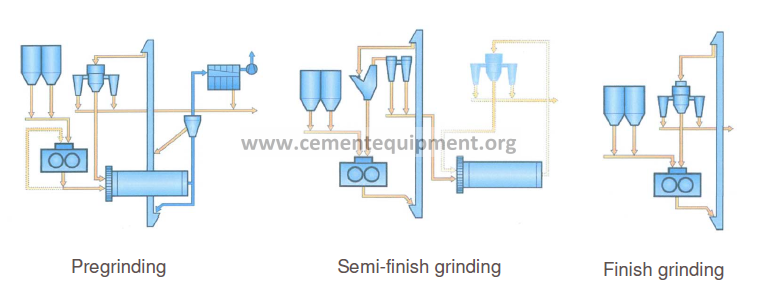
Comminution by compression: operating principles
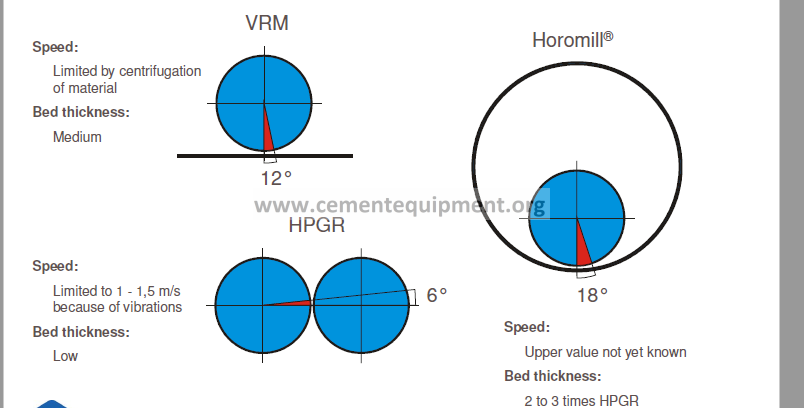
Operating principle of Horomill®

Horizontal roller mill (Horomill®)
For wet materials external dryer necessary
Wear costs comparable to build-up welded high pressure
grinding rolls
Raw material grinding
• Energy consumption 50 % compared to a ball mill
Cement grinding
• Max. cement fineness 4 000 cm²/g
• Energy consumption 70 % compared to a ball mill
Slag grinding
• Max. cement fineness 4 800 cm²/g
• Energy consumption 60 % compared to a ball mill
Comparison of different systems for cement grinding
Technological parameters for different grinding systems

Comparison of different systems for slag grinding
Comparison of service lives of the grinding elements from different
grinding systems when grinding granulated blastfurnace slag
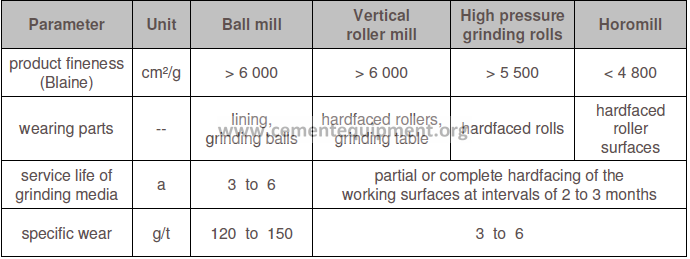
Influence of grinding system on cement properties
Grinding the same clinker in a ball mill, a VRM and a HPGR
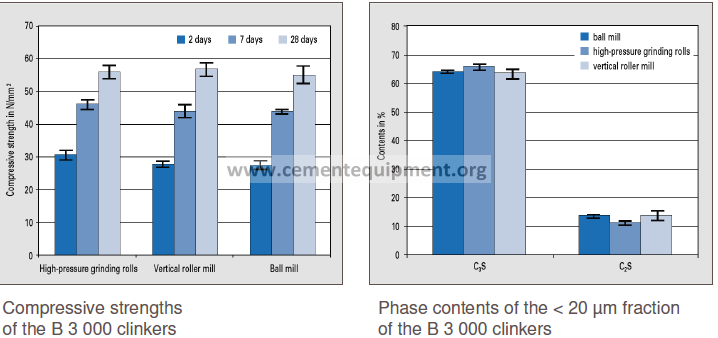
Slag grinding and properties of slag cement
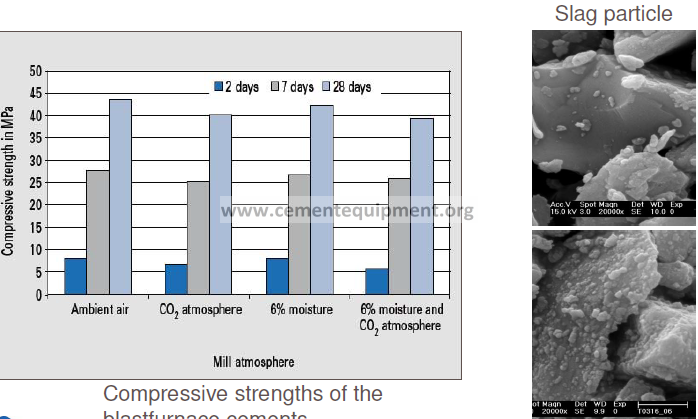
Size reduction energy

Energy utilisation of compression and impact

Throughput-speed-behaviour of different mill types
• VRM: depends on grindingtable-
diameter and number of
rollers
• HPGR: linear correlation only
for low circumferential speed of
rolls
• Modified horizontal roller mill:
linear correlation also for high
circumferential speed (limit not
yet known)

Direction of new developments
HPGR:
• Operation point
not adjustable
• Independent
adjustment of
grinding force and
thickness of
grinding bed not
possible
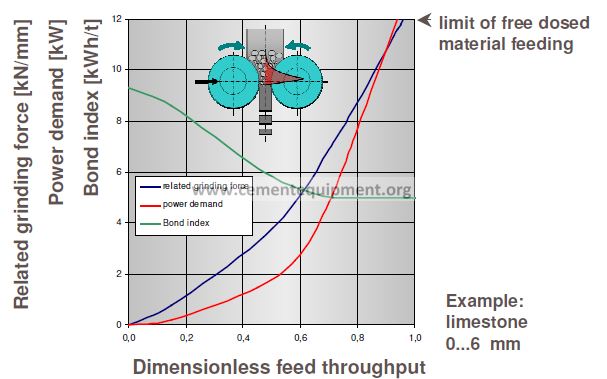
Objectives for future developments
• Comminution only by compression
• Compression of a grinding bed with defined thickness
• Independent adjustment of grinding force and thickness of
grinding bed
• Low specific energy demand
Modified horizontal roller mill
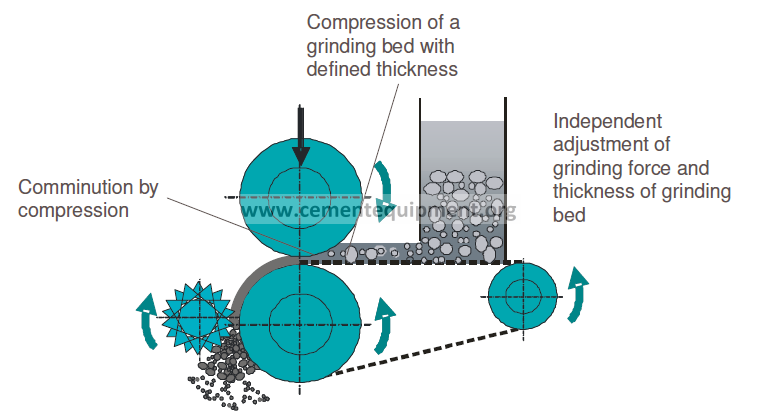
Other comminution technologies for cement grinding?
• HEM High Energy Milling: very small particles high reactivity
mechanical activation of particles (< 2μm); tested for cement
grinding
• Ultrasonic-comminution (Patent DE 102 59 456 B4)
energy-transfer by acoustic pulse; tested for slag grinding
• Plasma comminution (European Patent EP0976457)
comminution in a liquid by shock waves; tested for semiconductor
material
• Low temperature comminution (Internat. Application No.
PCT/EP2007/010159)
reducing particle size by rapidly reduction of energy level
Summary (1)
Ball mill
• High energy consumption
• Reliable – long service life of the wearing parts
• Limitation in feed moisture – at high feed moisture external
drying necessary
High pressure grinding rolls
• High energy savings
• Limitation in feed moisture – with external drying no
limitation in material moisture
• Maximum achievable fineness 4 000 cm²/g (clinker)
Summary (2)
Vertical roller mill
• High energy savings
• Very high material moisture contents (up to 25 %) can be
processed
• Lowwearcosts
• Maximum achievable fineness 4 500 Blaine for OPC
Summary (3)
Horizontal roller mill (Horomill)
• Energy savings of 30 to 40 %
• Maximum achievable fineness 4 000 Blaine for OPC and
4 800 Blaine for slag
No comminution without energy input
Highest efficiency of comminution by compression
Objectives
• Optimisation of known grinding processes necessary
• Development of new comminution processes:
comminution by compression in an explicit stress area
• Comminution in one process without postrefining
Pingback: Innovation and optimisation in cement grinding – INFINITY FOR CEMENT EQUIPMENT – Monodes